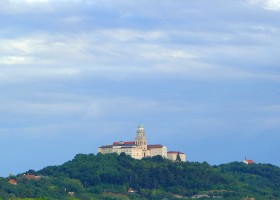HUNGARY Benedictine Pannonhalma Archabbey
The Benedictine Pannonhalma Archabbey, the second largest territorial abbey in the world and one of the oldest historical monuments of Hungary, is an active Benedictine monastery (also a World Heritage Site) founded in 996 by Prince Geza. The Archabbey played a very important role in spreading Christianity across the old Hungarian Empire. The whole structure is of outstanding universal value and includes the buildings of the Archabbey; the Basilica and crypt (a 13th century Gothic church); the educational buildings (Baroque Refectory and the famous monumental library which houses more than 360 000 volumes); the Chapel of Our Lady and the Millennium Monument; the Archabbey’s botanical garden, the herbal garden, parks and forests. A community of monks is still present today at the premises living under the Rule of St. Benedict (written by St. Benedict almost 1500 years ago). The Benedictine motto of ‘Ora et labora!’ (‘Pray and work!’) still dominates the several-hundred-year old traditions of the monastic life. Teaching and educating the youth are currently one of the most significant activities of the Benedictine monks.
For centuries, the abbey has also been famous for its excellent wine production. The vineyards were confiscated after WW II. In 2002, the rich tradition of Benedictine wine-making was revived






